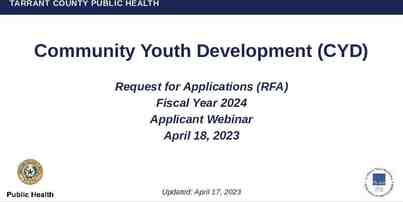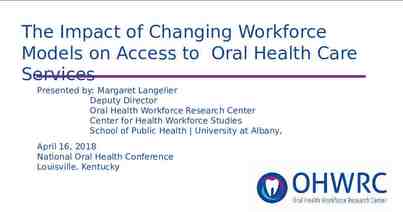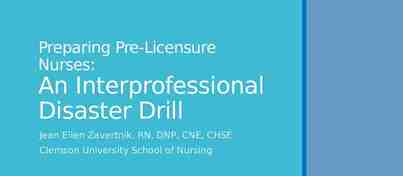AMP v. USPTO The Fate of Gene Patents carr/ferrell February 23, 2011
33 Slides1.03 MB

AMP v. USPTO The Fate of Gene Patents carr/ferrell February 23, 2011

Background 1989: It was discovered by the Int’l Breast Cancer Linkage Corsortium that a gene (BRCA1) on chromosome 17 was linked to breast and ovarian cancer.

1991: Myriad Genetics was founded 1994: Myriad, along with researchers from NIEHS, Univ. of Utah, McGill University, and Eli Lilly, sequenced BRCA1

1995: A second breast cancer gene (BRCA2) was discovered and sequenced. 1995-2000: The 7 patents-in-suit (for BRCA1/2) were submitted and issued. Six of the patents expire in 2015; one expires in 2017.

BRCA1/2 genes code for tumor suppressor proteins.

1998-2008: Myriad charges about 3000 for BRCA1/2 test. In 2008, revenues are 222 million, of which 190 million is profit. In contrast, the Ontario regional public health plan offering BRCA1/2 testing - in disregard of the Myriad patents – charges about 1000/test.

2000-2008: Myriad sends cease-and-desist letters and sues to enforce patents against various clinical testing and research centers. Licenses restrict licensees’ ability to perform full screenings and/or to tell patients the results. 2009: Lawsuit to invalidate BRCA1/2 patents is filed.

Plaintiffs: Medical/Advocacy Groups: Association for Molecular Pathology (AMP), American College of Medical Genetics (ACMG), American Society for Clinical Pathology (ASCP), College of American Pathologists (CAP), Breast Cancer Action (BCA), Boston Women’s Health Book Collective (OBOS)

Plaintiffs: (cont.) Geneticists and genetic counselors: Dr. Haig Kazarian, Dr. Arupa Ganguly, Dr. Wendy Chung, Dr. Harry Ostrer, Dr. David Ledbetter, Dr. Stephen Warren, Ellen Matloff, Elsa Reich Patients: Lisbeth Ceriani, Runi Limary, Genae Girard, Patrice Fortune, Vicky Thomason, Kathleen Raker

Amici of Plaintiffs: American Medical Association (AMA), American Society of Human Genetics, American College of Obstetricians and Gynecologists, American College of Embryology, and The Medical Society of the State of New York, March of Dimes Foundation, Canavan Foundation, Claire Altman Heine Foundation, Breast Cancer Coalition, Massachusetts Breast Cancer Coalition, National Organization for Rare Disorders, National Tay-Sachs & Allied Diseases Association, National Women’s Health Network, Asian Communities for Reproductive Justice, Center for Genetics and Society, Generations Ahead, Pro-Choice Alliance for Responsible Research, The International Center for Technology Assessment, Indigenous People Council on Biocolonialism, Greenpeace, Inc., Council for Responsible Genetics

Defendants: United States Patent and Trademark Office (USPTO), University of Utah Research Foundation (co-owner), Myriad Genetics (co-owner and sole provider of comprehensive BRCA1/2 screening)

Amici of Defendants: Biotechnology Industry Organization (BIO), Boston Patent Law Association, Rosetta Genomics, Inc., George Mason University, BayBio, Celera Corporation, The Coalition for 21st Century Medicine, Genomic Health, Inc., Qiagen, N.V., Target Discover, Inc., xDx, Inc., Prof. Kenneth Chahine, Dr. Kevin Noonan

Patents in Suit: 15 (out of 179) claims across 7 patents 5,747,282 5,837,492 5,693,473 5,709,999 5,710,001 5,753,441 6,033,857

Two types of claims 1. Composition claims: An isolated DNA coding for a BRCA1 polypeptide, said polypeptide having the amino acid sequence set forth in SEQ IDS NO:2.

2. Method claims: A method for detecting a germline alteration in a BRCA1 gene, said alteration selected from a group consisting of the alterations set forth in Tables 12A, 14, 18, or 19 in a human which comprises analyzing a sequence of a BRCA1 gene or BRCA1 RNA from a human sample or analyzing a sequence of BRCA1 cDNA made from mRNA from said human sample with the proviso that said germline alteration is not a deletion of 4 nucleotides corresponding to base numbers 4184-4187 of SEQ IDS NO:1.

Summary judgment: The Plaintiffs move for summary judgment to declare the 15 claims in suit invalid under 35 U.S.C. § 101 and unconstitutional under Article I, Section 8 of the Constitution and 1st and 14th Amendments.

35 U.S.C. § 101 Whoever invents or discovers any new and useful process, machine, manufacture, or composition or matter, or any new and useful improvement thereof, may obtain a patent therefore, subject to the conditions and requirements of this title.

Two-step analysis under § 101 1. 2. Whether the claimed invention is useful (“utility”) Whether the claimed invention constitutes a process, machine, manufacture, or composition or matter, or a new and useful improvement thereof (“statutory subject matter” or “patentable subject matter”) * Whether the claimed invention is new (“novelty”) is governed by § 102

In 1980, the U.S. Supreme Court specified that 3 types of subject matter are categorically not patentable under § 101 (Diamond v. Chakrabarty (1980)): 1. Laws of nature (algorithms) 2. Physical phenomena 3. Abstract ideas (mental processes)

Examples of “patentable subject matter”: Genetically engineered bacteria that had “markedly different characteristics from any [bacteria] found in nature” (Chakrabarty) Vitamin B12 active compositions from bacterial fermentates “that did not exist in nature in the form in which the patentees produced it,” in contrast to crystalline form of vitamin B12 (Merck)

Examples that are not patentable subject matter: Fruit treated with mold-resistant borax (American Fruit Growers) Cocktail of unmanipulated bacteria (Funk Brothers) Purified or extracted natural compounds: refined wood cellulose or purified tungsten (American Wood-Paper, General Electric) Natural compound manipulated through acid, heat, water, or distillation (Cochrane) Extracted and treated pine needle fibers (Latimer)

Isolated DNA vs. natural DNA Similarities: Convey the same information Same nucleotide sequences (except for introns) Code for same proteins Identical pseudogenes Differences (from chromatin form of DNA): Structurally different Chemically different Can be used in different ways (as probes, primers)

The District Court finds isolated DNA is not patentable subject matter. DNA (particularly its nucleotide sequence) is a physical embodiment of the laws of nature. Absence of chromatin proteins is result of mere purification. The nucleotide sequence of a gene appears in natural DNA albeit with introns, but the absence of introns is not claimed. Further, the absence of introns results from natural splicing. It is the nucleotide sequence that it shares with natural DNA that gives isolated DNA the ability to act as probe, primer, etc.

The District Court finds method claims are not patentable subject matter. Failed the “machine or transformation” test (Bilski), which was later found to be too restrictive by the U.S. Supreme Court. Recited only steps of “analyzing” or “comparing” DNA sequences (abstract mental processes). Although Myriad argued that obtaining DNA sequences requires transformative steps (e.g., isolating, sequencing), those steps were not actually claimed in challenged claim and may also be considered mere “data gathering.”

The District Court decision in AMP v. USPTO was issued on March 29, 2010. Final judgment entered April 19, 2010. On June 16, 2010, Myriad files a notice of appeal to the Federal Circuit.

As of February 22, 2011, the issues have been fully briefed (including more than 20 amici), and the oral arguments scheduled for April 4, 2011. The Federal Circuit usually publishes decision within 90-120 days of oral arguments. The losing party will likely either petition for a Federal Circuit rehearing en banc or appeal to the U.S. Supreme Court.

Myriad’s arguments on appeal 1. Procedural: The District Court lacked jurisdiction, because Plaintiffs failed to allege an “affirmative act” by Myriad constituting a controversy of “sufficient immediacy or reality.” 2. Legal: The District Court erred when it invalidated claims directed to isolated BRCA1/2 DNA and methods for detecting.

Myriad on Patentable Subject Matter Isolated DNA is a composition of matter Isolated DNA is not one of the 3 exceptions (law of nature, physical phenomena, abstract idea) “Products of Nature” are not categorically excluded from constituting patentable subject matter

Myriad on “Products of Nature” Would not protect valuable/new/useful inventions that add to human knowledge Would disrespect longstanding PTO practice, judicial precedent, and Congress’ legislative role “Markedly different” is a factual standard related to novelty; legal standard for patentable subject matter should be “human ingenuity” Inconsistent and unworkable with statute

Myriad on Method Claims Relies on precedent that a determining (of metabolite levels) step involves a transformation where the determination cannot be performed by mere inspection “Analyzing” or “comparing” DNA sequences require extraction and processing of human tissue samples The District Court erred construing “sequence” to refer to information rather than a physical molecule Improper characterization of the “essence of a claim”

Appellees’ Response “Myriad’s patents [] preclude examination of any and all BRCA1/2 genes” “Each of the claims defines isolated DNA according to how DNA functions in the body” “Myriad’s method claims cover the abstract idea of looking at DNA sequences and thinking about their significance.” Addition of data-gathering or postsolution activity does not confer patentable subject matter. The patents give entire control over a body of knowledge and over pure information to the patentee. (A BRCA gene cannot be designed around; new or alternative genes cannot be invented)

Department of Justice (DOJ) amicus brief proposes a “human-made” standard Distinguishes between man-made constructs (e.g., cDNA, recombinant vectors/plasmids, chimeric proteins) and isolated, but otherwise unmodified DNA Notes that in light of prevailing knowledge, cDNAs or simple recombinant vectors may become obvious (but that is an issue under §103, not §101)







